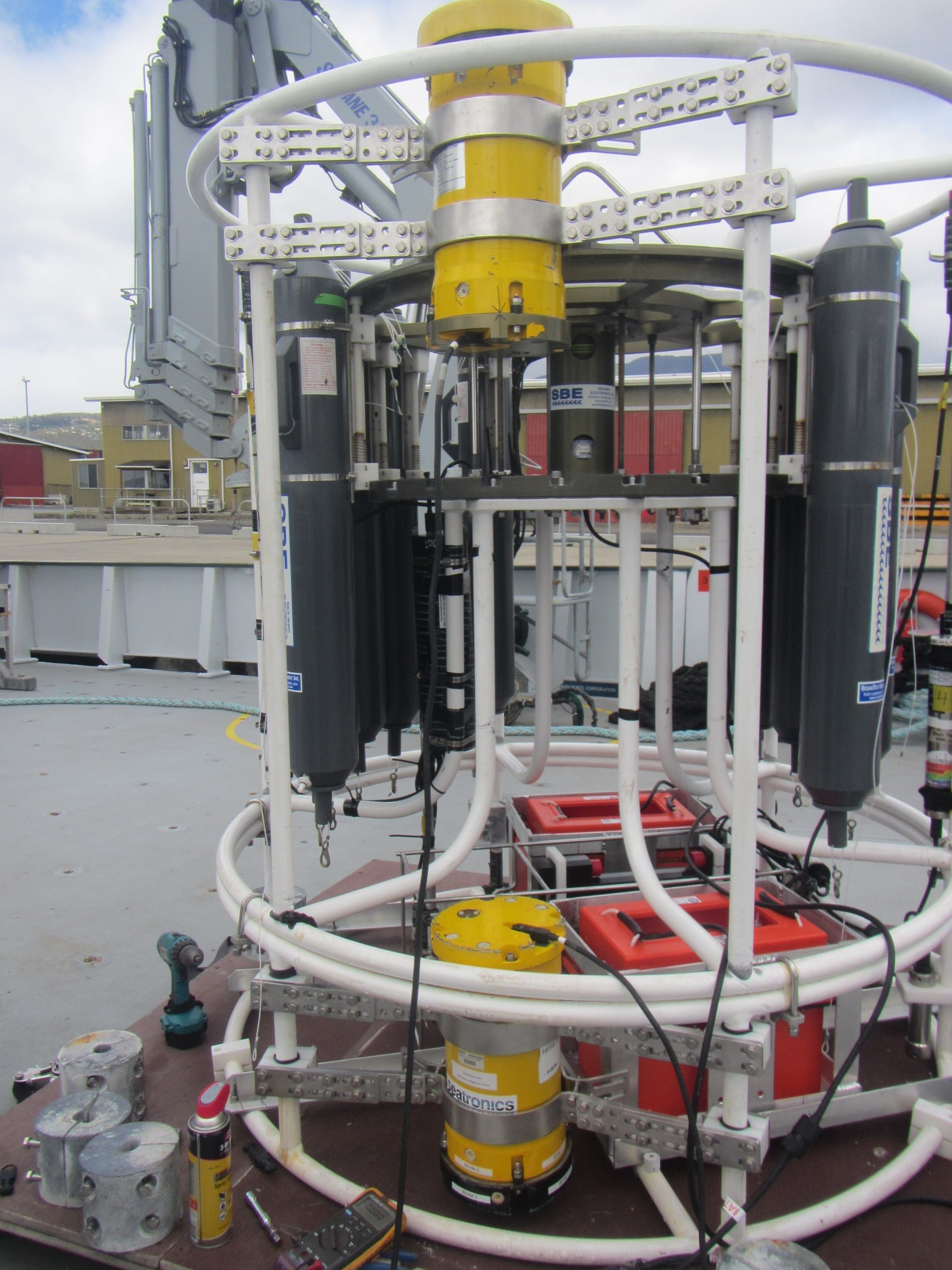The connection between physical processes in the ocean and the organisms that live in it can be summed up with one word: Nutrients. The movement of nutrients through the ocean by tides, gyres, eddies, and waves are in fact the reason we can exist on Earth. That’s a bold statement, I admit, but let’s examine it a bit more closely. … Read More
Two ships passing in the…. TTIDE
Well, not just passing, but collaborating in a very unique way. By the time Falkor started steaming out of Hobart, the RV Revelle had been at sea for a week and a half, deploying their record 15 moorings and starting CTD-LADCP profiling along the continental slope of Tasmania. With the Revelle’s head start on the science, we decided to make … Read More
Falkor: Working in an Unpredictable Sea
Yesterday found me standing on the aft deck of Falkor, gripping a rope to hold the swinging CTD rosette steady as we lowered it over the side and into the ocean. The rogue wave that crashed across the deck managed to soak my work boots and my jeans up to the knee. Even in fairly good weather, ocean fieldwork is … Read More
Falkor: CTDs Away!
Our first day of sailing consisted of voyage preparation. This included tying everything down and expecting the worst sea conditions. Pete and I managed to get the wet lab set up for the experiments that we will be conducting. We are trying to find out how the biology in the Tasman Sea is affected by the internal waves through … Read More
Falkor: Calibration Celebration
Good scientific data is wonderful, but data is not very useful if it isn’t accurate. The tricky bit about using the ADCP on this cruise is that it will be attached to the CTD rosette. This is called a “Lowered” ADCP or LADCP. The CTD carries batteries on it that have metals and electrical currents that can interfere with the … Read More
Revelle: A Mooring Milestone
We hit a huge milestone on Monday: we dropped mooring number 15, the last of our planned long-term moorings, as the sun set over the Tasmanian Landscape. All of the ingredients of the moorings—40 oversized spools of cable, 15 giant orange buoys, 50 thousand pounds of anchors, clusters of spherical glass balls enclosed in oversized yellow “hard hats,” and hundreds … Read More
Catching the Wave!
A very big part of this project depends on a piece of equipment called the ADCP (acoustic Doppler current profiler). This is one of the instruments that will help the scientists to find the location and breadth (the “beam”) of the Tasman Sea internal tide. To do that, they need to identify the difference in the speed of the water … Read More
More Q & A
Ms. Pfaff’s 6th grade Earth science class (period 3) asks, “Why are internal waves so important, that you decided to research them?” Internal waves are important from two perspectives. First, they have the ability to distribute ocean energy from lunar tides to various parts of the ocean. Energy (both heat and turbulence) is moved around the ocean by either tides … Read More
Q & A with TTIDE
Standley Middle School, San Diego: Ms. Pfaff’s class asks “Could internal waves reach shore and cause a tsunami?” Great question. Because internal tides are so deep in the water (hundreds to thousands of meters), they do not cause tsunamis. The internal wave is caused by some promontory or mountain on the ocean floor, and this doesn’t generate the same intensity … Read More
Revelle: More Moorings, Sun and Some Fish
We took advantage of a sunny, temperate weather window on Sunday to deploy moorings T1 and T3. We loaded each of the moorings with 36 temperature sensors, which spanned half a kilometer of line, and three CTD’s, instruments that use a band of sensors to measure the water’s conductivity, temperature and density. For each of the moorings we’ve deployed so … Read More

